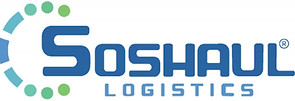8 Levels of DOT Inspections
- Dr. Sean Goffnett & Samantha Allen

- Aug 14, 2023
- 3 min read
Updated: Oct 5, 2023
What are DOT Inspections?
Every year, approximately 3 million inspections are carried out on commercial motor vehicles across North America. These inspections are crucial to ensure the safe operation of large trucks on our roads. Specially trained inspectors in each state, jurisdiction, territory, and province follow inspection protocols and criteria established by CVSA, known as the North American Standard Inspection Program. These inspections encompass eight distinct levels, each with a varying focus. The highest level, Level I Inspection, assesses both the driver and the vehicle comprehensively. Other levels concentrate on specific aspects, such as Level VI for radioactive materials. More importantly, motor carriers must comply with the rules and regulations related to inspection that are spelled out in 49 CFR 396. Let’s dive in to learn more about each of these inspection levels!

What are the 8 Inspections Levels?
Level 1: North American Standard Inspection
Level 1 inspections are considered one of the most comprehensive levels of inspections and one of the most common. This type of inspection examines both the driver and the CMV. Here is a list of potentially examined items during a Level 1 DOT inspection:
Driver’s license
Medical Examiner’s Certificate and Skill Performance Evaluation (SPE) Certificate (if applicable)
Alcohol and drugs
Driver’s record of duty status, as required
Hours of service
Seat belt
Vehicle inspection report(s) (if applicable)
Brake systems
Cargo securement
Coupling devices
Driveline/driveshaft
Exhaust systems
Frames
Fuel systems
Lighting devices
Steering mechanisms
Suspensions
Tires
Van and open-top trailer bodies
Wheels, rims, and hubs
Windshield wipers
Level 2: Walk-Around Driver/Vehicle Inspection
Level 2 inspections are like Level 1 inspections, but the inspection is conducted without physically getting under the CMV, which classifies it as a “walk-around” inspection. The inspected items listed above are the same for the Level 2 inspection as long as the items can be inspected without getting under the vehicle.
Level 3: Driver/Credential/Administrative Inspection
A Level 3 inspection examines items related to the driver only. These include:
Driver’s license
Medical Examiner’s Certificate and Skill Performance Evaluation (SPE) Certificate (if applicable)
Alcohol and drugs
Driver’s record of duty status, as required
Hours of service
Seat belt
Vehicle inspection report(s) (if applicable)
Carrier identification and status
Level 4: Special Inspection
Level 4 inspections are one-time-only examinations of a particular item to conduct research or to verify or refute a suspected trend. For example, a driver may have their Electronic Logging Device (ELD) inspected for Hours of Service (HOS) research.
Level 5: Vehicle-Only Inspection
A Level 5 Vehicle-Only Inspection is well, just that. It includes the inspection of all non-driver-related items, such as:
Brake systems
Cargo securement
Coupling devices
Driveline/driveshaft
Exhaust systems
Frames
Fuel systems
Lighting devices
Steering mechanisms
Suspensions
Tires
Van and open-top trailer bodies
Wheels, rims, and hubs
Windshield wipers
This inspection is typically done without a driver present and can be conducted at any location.
Level 6: North American Standard Inspection for Transuranic Waste and Highway Route Controlled Quantities (HRCQ) of Radioactive Material
The Level 6 inspection is for select radiological shipments. It includes:
Enhancements to the Level 1 inspection
Radiological requirements
North American Standard Out-of-Service Regulations for Radioactive Material
The CMV, driver, and cargo must be free of defects before departure. While en route, the Level 6 out-of-service criterion is applied.
It’s important to note that a nuclear symbol decal has been developed for vehicles meeting the Level 6 criteria. We will discuss inspection decals in greater detail in the next blog!
Level 7: Jurisdictional Mandated Commercial Vehicle Inspection
The Level 7 inspection program is for any CMV that does not meet the requirements of any other level of inspection. This typically applies to vehicles like school buses, limos, taxis, hotel shuttles, etc. These types of inspections can be conducted by CVSA-certified inspectors or other designated government employees or approved contractors.
Level 8: North American Standard Electronic Inspection
A Level 8 inspection is conducted virtually without direct interaction with an enforcement officer while the CMV is in motion. The electronic inspection includes:
Descriptive location, including GPS coordinates
Electronic validation of who is operating the vehicle
Appropriate driver’s license class and endorsement(s) for vehicle being operated
License status
Valid Medical Examiner’s Certificate and Skill Performance Evaluation (SPE) Certificate
Current driver’s record of duty status
Hours-of-service compliance
USDOT or (Canada) NSC number
Power unit registration
Operating authority
Unified Carrier Registration (UCR) compliance
Federal out-of-service orders
Check out our next blog…
What is a CVSA Decal and How Do I Get One?
Ready to START, DRIVE, & ACCELERATE your trucking business? Check out our course here!

Interested in being notified when more free resources are available? Subscribe down below and you'll be the first to know!
Soshaul Logistics LLC and its affiliates do not provide tax, legal or accounting advice. This material has been prepared for informational purposes only, and is not intended to provide, and should not be relied on for, tax, legal or accounting advice. It is meant to serve as a guide and information only and Soshaul Logistics, LLC does not assume responsibility for any omissions, errors, or ambiguity contained herein. Contents may not be relied upon as a substitute for the FMCSA's published regulations. You should consult your own tax, legal and accounting advisors before engaging in any transaction or operation.




Comments